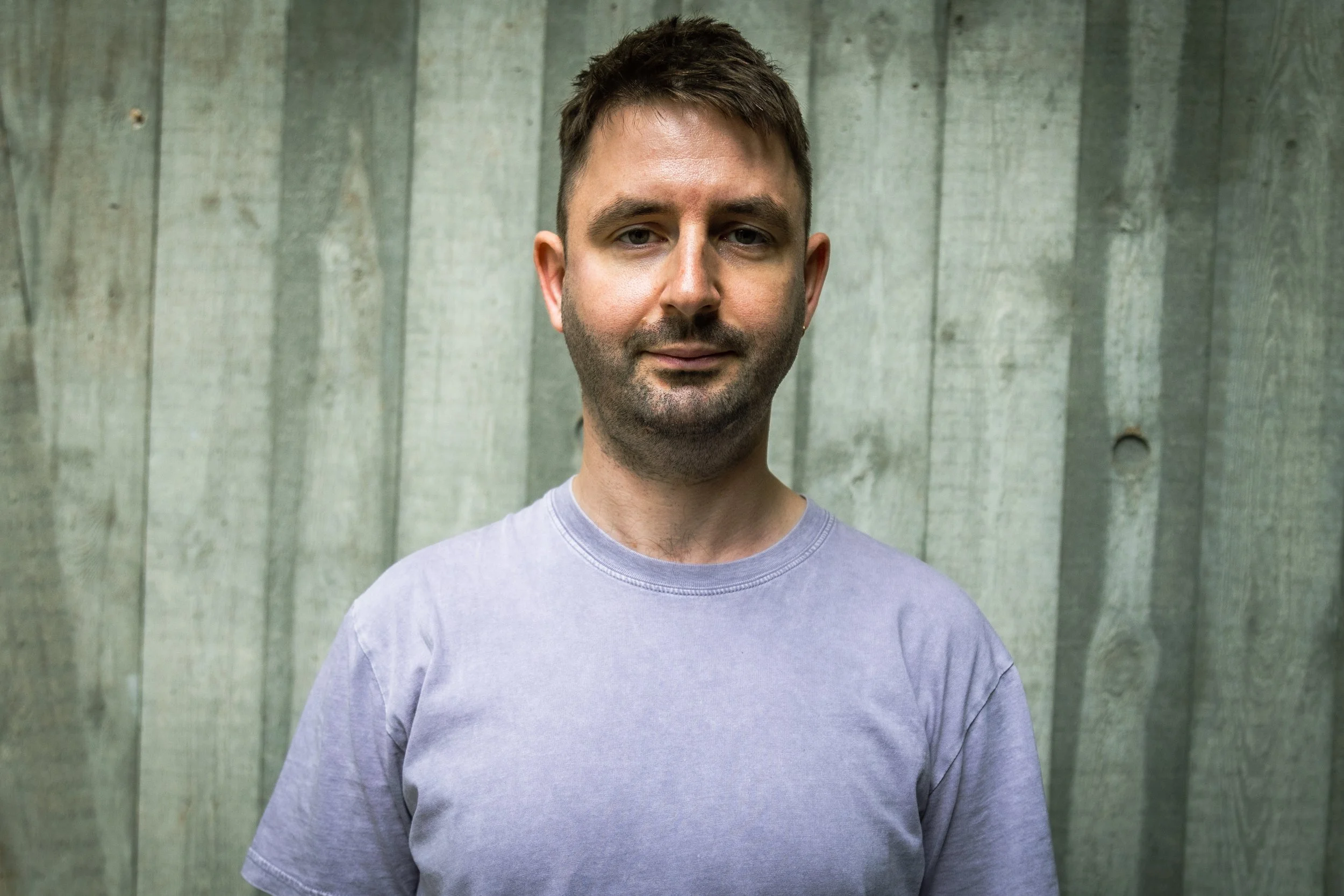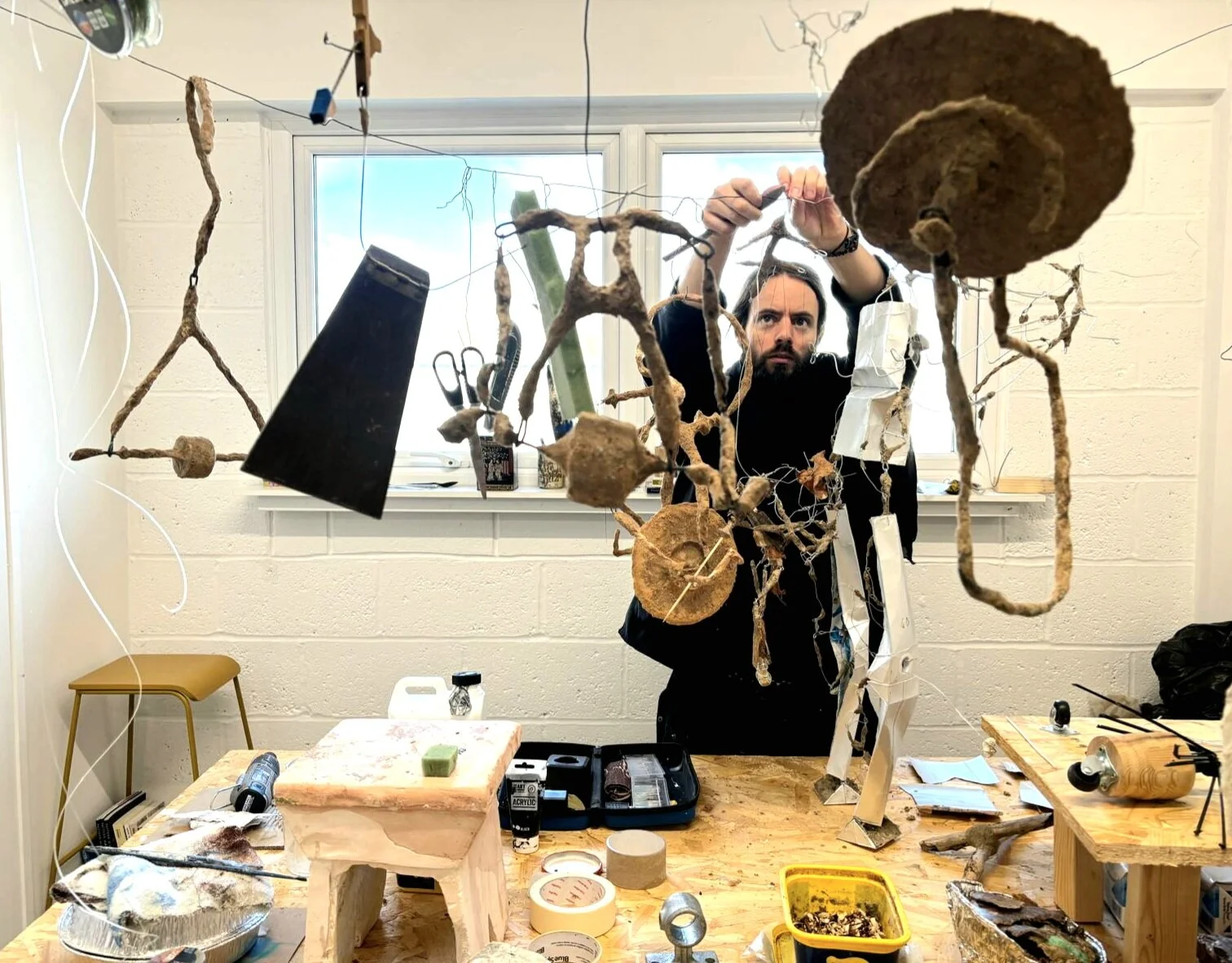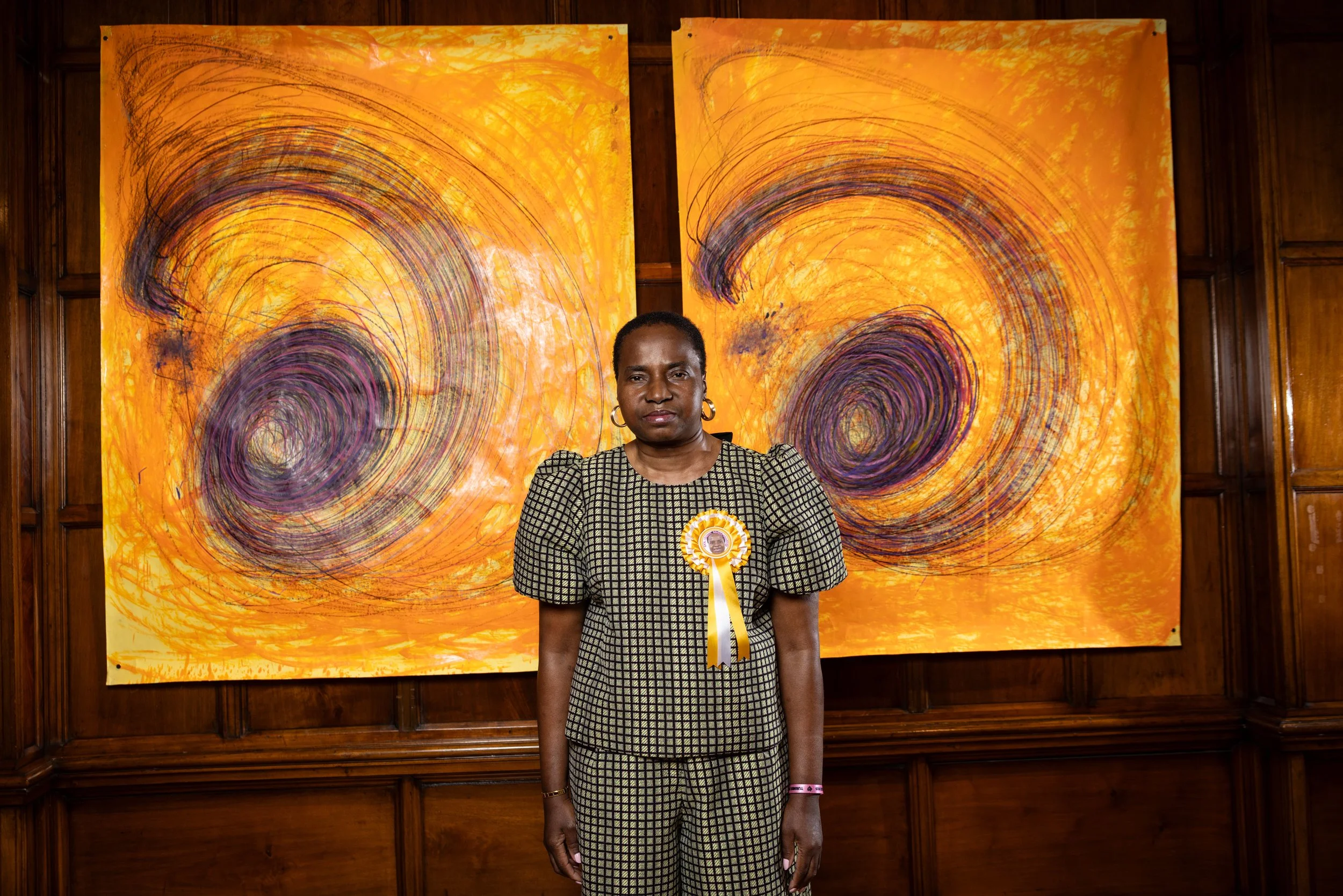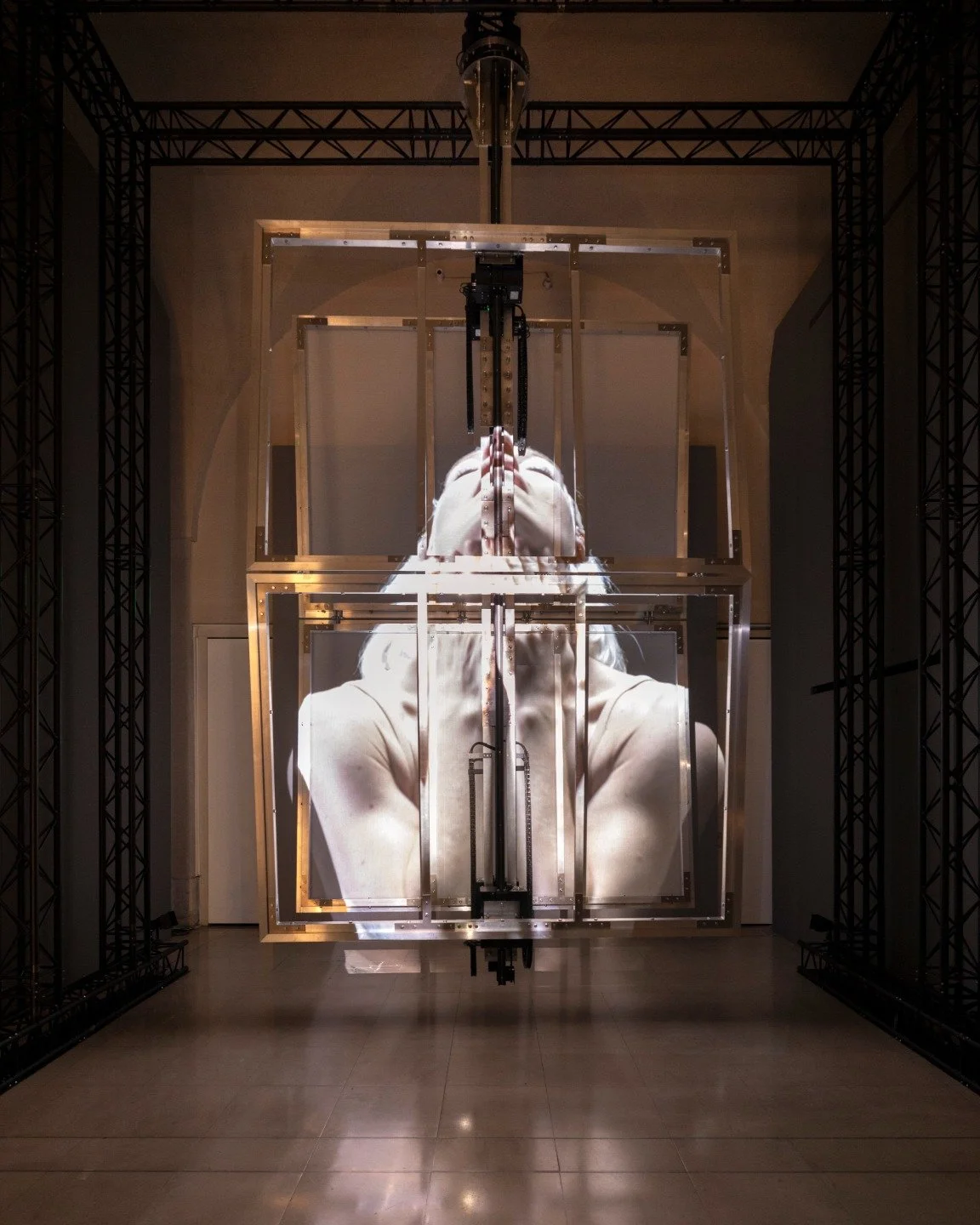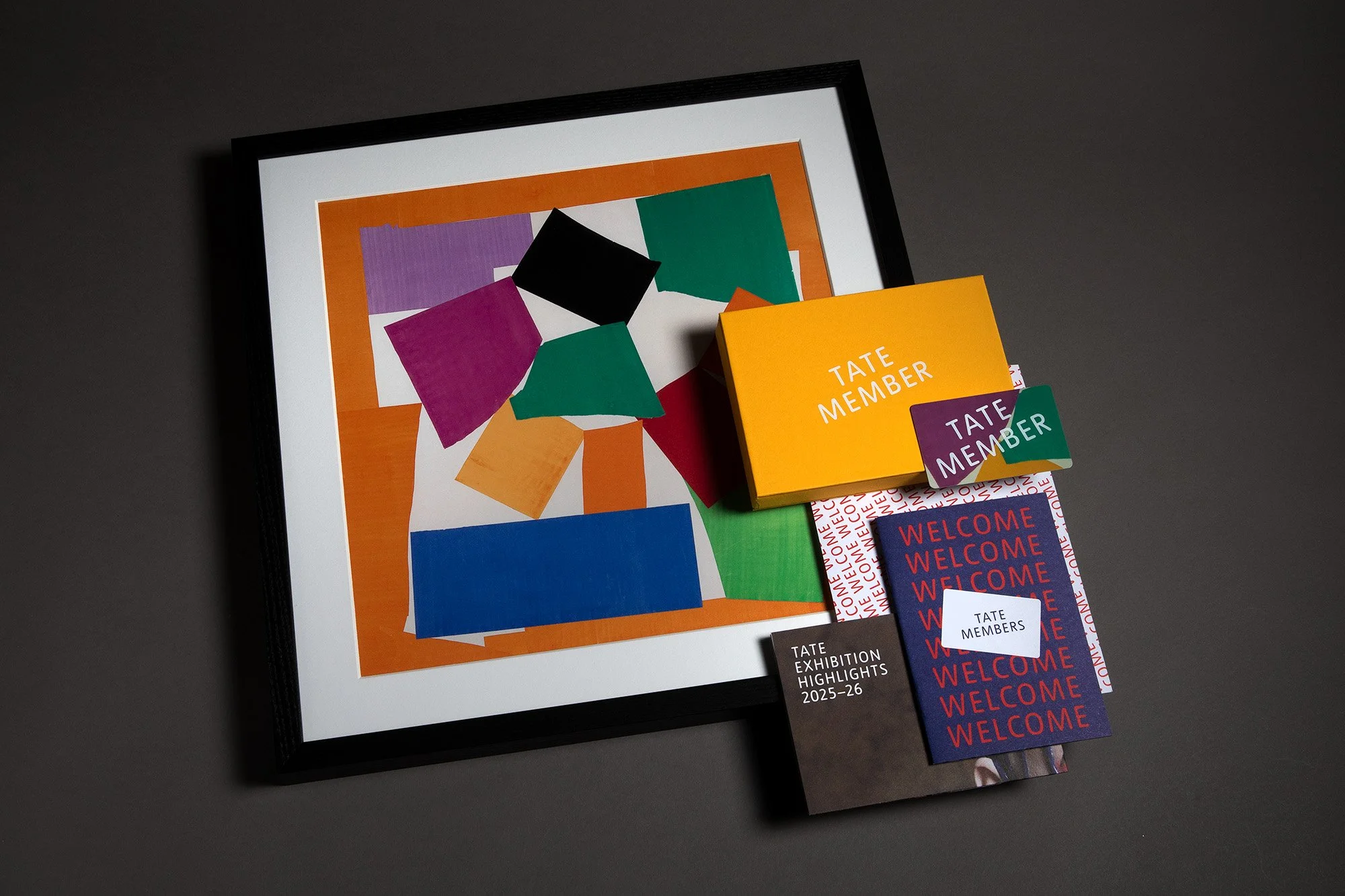In conversation with Matthew Hilton
“The work is a genuine reflection of myself and I hope that observers will recognise that reality and passion.”
- Matthew Hilton

Image. Matthew Hilton. Photo by Romany Gilmour.
Matthew Hilton has spent the majority of his career designing furniture and interior products. He's earned recognition as a Royal Designer for Industry and received multiple awards. His latest exhibit, TOUGH MOMENT, at Paul Smith's gallery, represents his first foray into sculpture.
How did your journey into scultpure begin?
There was not one moment, I have always been a creative person, at school I hid out in the art room and I always loved making things. My journey as a designer happened naturally after going to Kingston to study 3D design, but in the last six years or so, I have felt the urge to work more freely. Just me drawing, modelling and sketching without an end goal; which is how I had spent the majority of my working life. I found myself collecting objects which appealed to me: discarded pieces of metal from factory floor, old tools from flea-markets, bits of flotsam from river banks and beaches. I also began sketching on the iPad, 2D digital black and white artworks. All of this led me to thinking in 3D, experimenting with forms partly influenced by the materials and textures that I respond to but also intuitively playing with shapes. The confidence to know when the proportions of that shape felt right, for sure comes from decades of making those judgements as a designer, but equally, the lack of constraints has been unnerving. This last six or seven years has been a series of tough decisions, tough moments overlaid on a satisfying creative journey.
How would you describe your work's style? Is there a recognisable characteristic that defines it?
People do sometimes say to me that’s very ‘Matthew Hilton’ I sometimes know what they mean, but it is very difficult to identify exactly what characteristics define what constitutes 'Matthew Hilton' character in a design or artwork. What has been interesting is to see and feel that this signature does seem to cross mediums to some extent. I can see there are hints of it in the sculpture collection I am presenting which people who know my design work well may be able to sense.
Style is not a word I like to associate with work I do. To me it means I am working in a way that evokes certain associations.. and generalises in a way that can be misleading. I don’t mind other people making those observations however, that is bound to happen and as a creative person I don’t work in a vacuum without the influences of the time that I am working in and that are part of my history.

Image: Sculptures by Matthew Hilton.
How have you seen your creative approach change and grown over the years?
There isn’t a recognisable pattern or growth. I think that is because the approach to what I am designing, making or creating is influenced by the circumstances of my life, financial concerns and responsibilities as well as who I am working with. My approach could be affected by the attention that my work is receiving or not receiving at the time. As a designer working to produce designs for manufacture, it would affect my opportunities for freedom of expression. At this point in my life, you could say that some of these factors influencing my work have become lighter and I am therefore more free to take risks, push myself to explore and work in a much more solitary way..listening only to my own instincts and making my own decisions. This is new, much of my previous work has a shared responsibility, the manufacturer, the maker, my design team all share in the realising the final result. My name may be on the work in those instances but it feels different to what I am now about to do.
Looking back on your journey as a creative person, can you pinpoint the most fulfilling moment you've experienced?
I have to say that although I have spent most of my life creating objects that have a function, and there have been moments on that journey that stand out as being incredibly rewarding, I think one piece which comes to mind is the Cross table for Case furniture, that has all the elements I try to bring to a piece of furniture, it works, it functions in an interesting way, it has strong visual identity which gives it presence in the market, it takes risks but they pay off, the price is good, the quality is good. Everything is considered down to the packaging for shipping. But..I have found a new level of fulfilment realising objects that derive solely from my trust in an aesthetic and representation of an idea. It’s surprising to me and extremely fulfilling.
Your upcoming exhibition TOUGH MOMENTS is set to be showcased at the Paul Smith Gallery Space. Can you tell us about the journey that brought TOUGH MOMENTS to life?
After having spent time experimenting with 2D drawings and also some model making, I started to feel more confident about asking for feedback from some people I knew in the art world. These conversations encouraged me to keep working and at some point, I felt there was enough of a clear direction in what I was doing to create a collection for a show. On considering who this work might appeal to, it occurred to me that Paul Smith had always been interested in my work and in the ’80’s was one of the first people to buy my cast aluminium candle sticks to sell in his shop.
I contacted him and there was a very positive response. From that point on I started working in earnest to translate the pieces I was working on from 3D CAD objects and printed models to the full size objects themselves.

Image: Installation view of Matthew Hilton: TOUGH MOMENT at the Paul Smith Gallery Space, Albemarle Street, Mayfair.
What was the driving inspiration behind the works that will be on show?
There are many inspirations, or aims or ideas I had in mind, there is the raw beauty of industry, the heat, the noise, the smells, there is huge respect for people who manufacture things at this heavy engineering level. I have seen hundreds of factories and I came to realise that there is a very elegant and functional, distilled aesthetic that comes for things being designed purely for function, for cost effectiveness, longevity, robustness. A truck gear box casing for example has little time spent on aesthetics in its design but the criteria, the framework set by the aim of the designers, in the end produces a thing of elegant raw beauty in my mind. These things are rarely seen, almost never judged for their aesthetic quality and I wanted to draw attention to this almost by product aesthetic. I see beauty there which I am trying to elevate, or highlight.
What kind of experience do you envision for visitors engaging with your pieces?
Art is obviously a subjective and personal experience, and people will engage with it in their own unique ways. Some may respond, others not at all. For those that do, I suppose they may feel the same things that I do- an appreciation of the materiality, solidity and weight of the pieces. They might feel the tension between the weight of the material and the lightness of the interacting forms. Some of the pieces have references to intimate relationships, to the duality and singularity, the pushing away and coming together, splits, joins and what is between. The glue and the space, the attraction and rejection.
I hope people will recognise those elements but also I know that people will see different things and in the end I can do only what I can do. This being my first ever show I am supremely interested in how people will respond. The work is a genuine reflection of myself and I hope that observers will recognise that reality and passion.
Throughout your career, what’s been the most impactful lesson you’ve learned about yourself, your skills, or just life in general?
I am surprised, I surprise myself, I hadn’t realised I could work so hard, I have realised that relationships in your career are very important, in life also of course. I have learnt how a positive and flexible attitude is a massive asset.
I now understand that although the doing is supremely important, it is the thinking that makes the biggest difference. without that being thorough the end result is rather vacuous.
Is there a piece of advice you’ve received that really resonated with you and significantly influenced your approach to your work?
Ha, believe in yourself and work hard, the same advice I would give anyone.
We like to discover new artists in our interviews. Are there three designers you'd recommend our readers keep an eye out for this year?
I have been really immersed in MY new direction so I really can't be sure I am up to date and following all the design world news but I think what Atelier thirty four are doing is really interesting they have just recently started their own design business after loyally working with me for decades. They are creating some lovely things.We will also continue to work together under the Matthew Hilton Studio name.
As someone who has deeply impacted the world of furniture design, what advice would you offer to emerging designers?
It may be a cliche but believe in yourself and work hard. There is absolutely no escaping working hard, just put hours in. Work out what your beliefs are, what you are interested in and be genuine.You need to feed your mind and let your work be informed by the world around you rather than other designs/designers.
Matthew Hilton: TOUGH MOMENT will be on at the Paul Smith Gallery Space on Albemarle Street, Mayfair, until 31 October 2023.
Website: matthewhiltonstudio.com
Instagram: @matthewhiltonsculpture
Afra Nur Uğurlu is a visual artist and recent London College of Communication graduate whose practice bridges beauty, fashion, art, and cultural studies. In this interview, we discuss Hinterland, her zine exploring how the Turkish diaspora navigates and challenge es dominant representations…
Townsend Productions is marking the 50th anniversary of the Grunwick Strike (1976–1978) with the return of We Are the Lions, Mr Manager!, a powerful play written and musically directed by Neil Gore and directed by Louise Townsend. The production features Rukmini Sircar as Jayaben Desai. Ahead of the London run, we spoke to Neil Gore and Rukmini Sircar…
Danielle Brathwaite-Shirley lives and works between Berlin and London. Working predominantly in animation, sound, performance and video game development, and with a background in DIY print media and activism, the artist’s practice focuses on intertwining lived experience with fiction to imaginatively retell and archive the stories of Black Trans people…
Aaron Wright is a curator of contemporary performing arts, originally from the Midlands, and currently serves as Head of Performance & Dance at London’s Southbank Centre, a role he took on in 2023. Alongside his work at the Southbank Centre, he runs the queer performance club night Knickerbocker at The Yard Theatre in Hackney Wick…
Dr Lana Locke, Senior Lecturer at Camberwell College of Arts, University of the Arts London, is a multidisciplinary visual artist whose work spans sculpture, painting, drawing, video, and performance. Self-taught for over a decade before gaining postgraduate qualifications, Lana’s practice focuses on sustainability, materiality, and community engagement…
Judith Clark is a curator and fashion exhibition-maker, and currently Professor of Fashion and Museology at the University of the Arts London. She lectures on the MA Fashion Curation and is a founding Director of the Centre for Fashion Curation. From 1997 to 2002, she ran London’s first experimental fashion gallery in Notting Hill…
Lindokuhle Sobekwa is a South African photographer from Katlehong, Johannesburg. Since his first exhibition in 2013, his work on social issues and personal histories—like his photo essay Nyaope—has gained international recognition. A member of Magnum Photos, Sobekwa was recently awarded the 2025 Deutsche Börse Photography Foundation Prize for his project I carry Her Photo with Me…
Sol Bailey Barker is a multidisciplinary artist whose work explores the connections between ecology, mythology, and speculative futures. Through sculpture, sound, and installations, they blend ancient knowledge with emerging technologies to examine humanity’s relationship with the natural world…
Hanna Salomonsson is a London based Swedish ceramic artist. Following a career in landscape architecture, she re-trained in ceramics in 2018. She also holds a BA in Art History, and this combined with her landscape grounding provides a unique vantage point for her ceramic practice…
Lewis Walker is a London-born queer, non-binary movement artist. A former Great Britain gymnast and Acrobatic Gymnastics World Champion, they trained from age 6 to 21 before earning a degree in Contemporary Dance. Their work spans theatre, film, fashion, music, and the commercial sector. Walker continues to choreograph gymnastics competition routines for the Great Britain, Italian and French national teams…
Daniel is a curator-producer dedicated to the social impact of the arts and cross-sector collaboration. He is currently Creative Director & Chief Executive of Old Diorama Arts Centre (ODAC) in Euston, where he has strengthened the centre’s community connections amidst urban transformation…
Peter Bellerby is the founder of Bellerby & Co. Globemakers, a company renowned for its exquisite hand-crafted globes. Established in 2010, the company specialises in meticulously designed pieces that showcase exceptional craftsmanship, positioning Bellerby & Co. as a leader in the globe-making industry…
Gabriele Beveridge is known for her sculptural and conceptual practice that combines materials as diverse as hand-blown glass, photo chemicals, and found images…
Robyn Orlin is a South African dancer and choreographer born in Johannesburg. Nicknamed in South Africa "a permanent irritation", she is well known for reflecting the difficult and complex realities in her country. Robyn integrates different media into her work (text, video, plastic arts) to she investigates a certain theatrical reality which has enabled her to find her unique choreographic vocabulary…
Katrina Palmer, an artist known for exploring materiality, absence, and dislocation, recently spoke to us following her year-long residency at the National Gallery about her exhibition The Touch Report…
Enej Gala is an artist who splits his time primarily between London and his hometown of Nova Gorica, Slovenia. A graduate of the Academy of Fine Arts in Venice and the Royal Academy Schools (2023), Gala first gained our attention with Neighbour’s Harvest, an installation that cleverly combined puppetry and conceptual art…
David Ottone is a Founding Member of Award-winning Spanish theatre company Yllana and has been the Artistic Director of the company since 1991. David has created and directed many theatrical productions which have been seen by more than two million spectators across 44 countries…
Darren Appiagyei is a London-based woodturner whose practice embraces the intrinsic beauty of wood, including its knots, cracks, bark, and grain. Highly inspired by Ghanaian wood carving, Darren explores raw textures and new woods in his work…
Huimin Zhang is an artist specialising in 22K gold, known for her innovative craftsmanship. She combines various cultural techniques, including filigree, engraving, and European gold and silver thread embroidery, to create unique works…
Akinola Davies Jr. is a BAFTA-nominated British-Nigerian filmmaker, artist, and storyteller whose work explores identity, community, and cultural heritage. Straddling both West Africa and the UK, his films examine the impact of colonial history while championing indigenous narratives. As part of the global diaspora, he seeks to highlight the often overlooked stories of Black life across these two worlds.
Hannah Drakeford is a London-based interior designer known for her bold and colourful interiors. She transitioned from a 21-year retail design career to interior design, and has gained popularity on social media where she now shares creative upcycling tutorials and encourages individuality in home decor…
Shula Carter is an East London-based creative with a background in contemporary, ballet, and modern dance. She trained at the Vestry School of Dance and later at LMA London, where she developed skills in commercial, hip hop, and tap dance, alongside stage and screen performance…
Dian Joy is a British-Nigerian interdisciplinary artist whose work delves into the intersections of identity, digital culture, and the fluid boundaries between truth and fiction. Her practice is rooted in examining how narratives evolve and shape perceptions, particularly in the digital age.
Dian Joy is a British-Nigerian interdisciplinary artist whose work delves into the intersections of identity, digital culture, and the fluid boundaries between truth and fiction. Her practice is rooted in examining how narratives evolve and shape perceptions, particularly in the digital age.
John-Paul Pryor is a prominent figure in London’s creative scene, known for his work as an arts writer, creative director, editor, and songwriter for the acclaimed art-rock band The Sirens of Titan…
Jim Murray is an actor, director, conservationist and artist known for Masters of Air (2024) and The Crown (2016). Murray first came to prominence as an artist in 2023 with his acclaimed inaugural exhibition In Flow, where his dynamic abstract paintings were hung in conversation with John Constable’s The Dark Sid…

Discover a guide to some of the art exhibitions to see in London in February 2026, including the much-anticipated Tracey Emin and Rose Wylie exhibitions at Tate and the Royal Academy of Arts respectively; works by artists Aki Sasamoto and Stina Fors at Studio Voltaire; the third edition of the Barbican’s Encounters series with Lynda Benglis; an Isaac Julien world premiere at Victoria Miro…
Serpentine has announced that Mexican architecture studio LANZA atelier, founded by Isabel Abascal and Alessandro Arienzo, has been selected to design the Serpentine Pavilion 2026. Sponsored by Goldman Sachs, the Pavilion will open to the public at Serpentine South…
Tate Britain will stage Europe’s largest retrospective of James McNeill Whistler in more than three decades, bringing together around 150 works that span painting, drawing, printmaking, and design…
Brixton House launches its 2026 season with an ambitious programme that continues its commitment to championing underrepresented voices, global perspectives and deep community connection. Following the sold-out success of Black Power Desk, Limp Wrist & The Iron Fist…
Just off Bermondsey Street, a short stroll away from London Bridge, is Morocco Bound Bookshop. Independent bookshop by day, lively venue by night this place is one of London’s hidden gems…
Camden Art Centre will present a strong programme of contemporary art across 2026 and 2027, bringing together both emerging and established artists…
From bold new works by leading choreographers to iconic operas reimagined for modern audiences, The Royal Ballet and The Royal Opera continue to define London’s cultural scene. With tickets starting at just £9, here is your guide to the unmissable performances of 2026…
January is your final opportunity to catch some of London’s most exciting and talked-about exhibitions of 2025. Spanning fashion, photography, contemporary sculpture and multimedia, a diverse range of shows are drawing to a close across the city…
From explorations of queer life, diasporic memory, and American urban history to inventive contemporary approaches, this guide provides an overview of the most anticipated photography exhibitions in London this year…
This January, discover London’s most exciting art exhibitions, from emerging talents and debut solo shows to major museum highlights…
Condo London returns in January 2026 as a city‑wide, collaborative art programme unfolding across 50 galleries in 23 venues throughout the capital, from West London and Soho to South and East London. This initiative rethinks how contemporary art is shown and shared, inviting London galleries to host international…
The Southbank Centre has announced Classical Mixtape: A Live Takeover, a one-night-only, multi-venue event taking place in February 2026, bringing together more than 200 musicians from six orchestras across its riverside site…
Joseph Wright was an incredibly unique painter who created powerful, realistic masterpieces with dramatic lighting. The relatively small but extremely rich exhibition at the National Gallery sheds light on…
Discover London’s unmissable 2026 fashion exhibitions, from over 200 pieces of the late Queen’s wardrobe at The King’s Gallery to the V&A’s showcase of Elsa Schiaparelli’s avant-garde designs and artistic collaborations…
Nnena Kalu has won the Turner Prize 2025, taking home the £25,000 award at a lively ceremony in Bradford, the UK’s City of Culture this year…
Marking her largest UK project to date, Sedira’s work will respond to the unique architectural and historical context of the iconic Duveen Galleries, offering audiences an experience that merges the political, poetic, and personal…
Afra Nur Uğurlu is a visual artist and recent London College of Communication graduate whose practice bridges beauty, fashion, art, and cultural studies. In this interview, we discuss Hinterland, her zine exploring how the Turkish diaspora navigates and challenge es dominant representations…
Serpentine and The FLAG Art Foundation have announced a landmark transatlantic partnership that will introduce the largest contemporary art prize ever awarded to a single artist in the United Kingdom.
The Lagos International Theatre Festival 2025 (LIFT) kicked off in spectacular fashion at the Muson Centre on 14th November. The star-studded opening night featured electrifying theatre, music, dance, and even an impromptu rap freestyle from Lagos Governor, Mr. Sanwo-Olu…
Miami Art Week 2025 transforms the city into a global art hub, featuring Art Basel, Design Miami, top fairs, museum exhibitions, and pop-ups. From established galleries to emerging artists and installations, the week offers a dynamic snapshot of contemporary creativity across Miami Beach, Wynwood, Downtown, and the Design District…
This guide highlights some of the must-see art exhibitions to visit over the festive period in London, including the days between Christmas and New Year’s. From major retrospectives of international masters such as Kerry James Marshall, Wayne Thiebaud, and Anna Ancher, to engaging contemporary works by Danielle Brathwaite-Shirley, Jennie Baptiste, and Tanoa Sasraku…
Townsend Productions is marking the 50th anniversary of the Grunwick Strike (1976–1978) with the return of We Are the Lions, Mr Manager!, a powerful play written and musically directed by Neil Gore and directed by Louise Townsend. The production features Rukmini Sircar as Jayaben Desai. Ahead of the London run, we spoke to Neil Gore and Rukmini Sircar…
Amsterdam is a beautiful city to visit in the autumn, with its canals framed by colourful leaves and crisp, atmospheric streets perfect for exploring. To help plan your cultural itinerary, we’ve put together a guide to some of the art exhibitions worth visiting this season. Highlights include Sandra Mujinga’s…
The National Gallery will host the first ever UK exhibition dedicated solely to Catharina van Hemessen (1527/28 – after 1565), one of Europe’s earliest female painters, in 2027…
London’s cultural scene, a gallery or museum membership is the perfect alternative to another pair of socks. From unlimited access to exhibitions and exclusive events to discounts in shops and cafés, these memberships offer experiences that can be enjoyed throughout the year, while also supporting the vital work of arts organisations…
In the summer of 2026, the Hayward Gallery at London’s Southbank Centre will present a major exhibition of Anish Kapoor’s work, marking the artist’s first UK show at the gallery since his landmark retrospective in 1998. Curated by Ralph Rugoff, the exhibition will bring together new and seminal works…
From the 6th to the 9th of November, the leading West African art fair Art X Lagos celebrates its 10th birthday at the Federal Palace on Victoria Island. Founded by Tokini Peterside-Schwebig in 2016, the fair has become an unmissable event in the global art calendar, attracting galleries from over 70 countries and participants from 170 countries since its launch…




